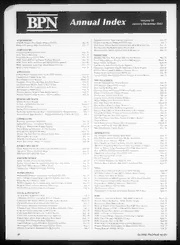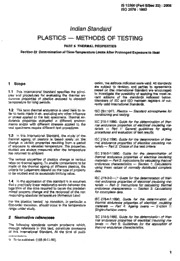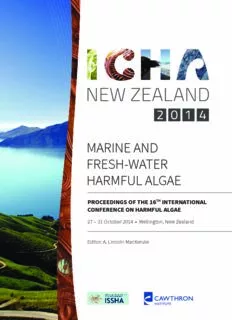
marine and fresh-water harmful algae PDF
Preview marine and fresh-water harmful algae
MARINE AND FRESH-WATER HARMFUL ALGAE PROCEEDINGS OF THE 16TH INTERNATIONAL CONFERENCE ON HARMFUL ALGAE 27 – 31 October 2014 • Wellington, New Zealand Editor: A. Lincoln MacKenzie MARINE AND FRESH-WATER HARMFUL ALGAE TH PROCEEDINGS OF THE 16 INTERNATIONAL CONFERENCE ON HARMFUL ALGAE 27-31 October 2014 Wellington, New Zealand EDITOR A. Lincoln MacKenzie Published by: Cawthron Institute, Nelson, New Zealand (www.cawthron.org.nz) and the International Society for the Study of Harmful Algae (www.issha.org) 1 For bibliographic purposes this document should be cited as follows: A. Lincoln MacKenzie [Ed]. Marine and Freshwater Harmful Algae. Proceedings of the 16th International Conference on Harmful Algae, Wellington, New Zealand 27th-31st October 2014. Cawthron Institute, Nelson, New Zealand and International Society for the Study of Harmful Algae (ISSHA) ISBN 978-87-990827-5-9 Available from: http://www.cawthron.org.nz/publications/ICHA16-Proceedings.pdf http://www.issha.org/Welcome-to-ISSHA/Conferences/ICHA-conference-proceedings/ICHA16- Proceedings.pdf 2 3 Conference Organisation Local Organising Committee Lincoln MacKenzie - Chair (Cawthron Paul McNabb (Cawthron Institute) Institute) Rex Munday (Ag-Research Ltd.) Hoe Chang (NIWA) Wendy Nelson (NIWA) Gustaaf Hallegraeff (University of Tasmania) Lesley Rhodes (Cawthron Institute) David Hamilton (University of Waikato) Brian Roughan (NZ Ministry for Primary Tim Harwood (Cawthron Institute) Industries) Michelle Jones (Cawthron Institute) Kirsty Smith (Cawthron Institute) Islay Marsden (University of Canterbury) Susie Wood (Cawthron Institute) Robert Matheson (Cawthron Institute) International Advisory Committee Donald Anderson, USA Richard Lewis, Australia Rhodora Azanza, Philippines Chris Miles, Norway Mireille Chinain, Tahiti Øjvind Moestrup, Demark Henrik Enevoldsen, Denmark Shauna Murray, Australia Yasuwo Fukuyo, Japan Myung Gil Park, Korea Esther Garcés, Spain Luis Proença, Brazil Leonardo Guzman, Chile Robin Raine, Ireland Philipp Hess, France Beatriz Reguera, Spain Kin-Chung Ho, China Suzanne Roy, Canada Ichiro Imai, Japan Sandra Shumway, USA Ian Jenkinson, China Toshiyuki Suzuki, Japan Uwe John, Germany Patricia Tester, USA Hak Gyoon Kim, Korea Gires Usup, Malaysia Jane Lewis, England Ming-Jiang Zhou, China Reviewers Hoe Chang (NIWA) Lesley Rhodes (Cawthron Institute) Gustaaf Hallegraeff, (University of Tasmania) Andy Selwood (Cawthron Institute) Tim Harwood (Cawthron Institute) Kirsty Smith (Cawthron Institute) Lincoln MacKenzie (Cawthron Institute) Susie Wood (Cawthron Institute) Islay Marsden (University of Canterbury) Paul McNabb (Cawthron Institute) Rex Munday (Ag-Research Ltd.) 4 Preface The 16th International conference on Harmful Algae was held at the Michael Fowler Centre in Wellington, New Zealand, over 5 days between the 27th and 31st October 2014. The conference was hosted by the Cawthron Institute, Nelson, New Zealand‘s largest independent environmental science research organisation. The theme of the conference was Advancement Through Shared Science in recognition of the multidisciplinary nature of the field and the important role international collaboration has played in understanding HAB phenomena and managing and mitigating their effects. The conference was opened by Mr Scott Gallacher, the Deputy Director General of the New Zealand Ministry for Primary Industries and Professor Charles Eason, Chief executive of the Cawthron Institute. The conference was attended by 385 delegates from 34 countries. There were 196 oral presentations, each of 15 minutes duration with 5 minutes question time, and 150 poster presentations. The conference had good representation from both the Freshwater and Marine sectors of the HAB research field. Because of the large number of talks it was necessary to have three parallel sessions throughout the conference. However the venues were in close proximity to each other and timely exchanges between them went well due largely to the accurate time keeping by the session chairs, to whom the organisers were most grateful. In an innovation for this conference series, there were two additional sessions (total of 19 papers) of 5 minute speed talks in which the presenters gave a series of succinct, well prepared and interesting talks on a range of topics. The oral presentations were divided into the following sessions: • Taxonomy, systematics and genomics • Toxicology • HAB life cycles • Health effects of HABs • HABs in a changing world • Surveillance and management • Freshwater HAB Biology and Ecology • Ciguatera • Economic effects of HABs • HAB technologies • HAB molecular taxonomy and ecology • HAB Ecology and physiology • HAB transcriptomics • HABs and Bivalves • HAB parasites • Freshwater benthic HABs • HAB dynamics and modelling • Dinoflagellate cysts • Heterotrophy and mixotrophy • Ostreopsis • Algal toxins • Ichthyotoxic HABs • HAB mitigation On the first and last day there were Keynote addresses by Professors Øjvind Moestrup (University of Copenhagen) and Hans Paerl (UNC-Chapel Hill Institute of Marine Sciences). Professor Moestrup discussed the species concept and current issues in the area of naming and identification of harmful algae, brought about through the use of molecular methods that do not always coincide with traditional classifications based on morphological characteristics. Professor Paerl discussed how CyanoHABs are regulated by nutrients (both N & P), light, temperature, stratification, water residence time and biotic interactions. His main thesis was that future rising temperatures and greater hydrologic variability will exacerbate problems with CyanoHABs and nutrient controls may need to be more aggressively pursued in response to global climate change. The seven Plenary speakers provided extended talks that introduced each major topic area. These proceedings contain 9 papers by all the Keynote and Plenary speakers and 54 papers from other contributors organised into seven chapters covering broad topic areas (Algal Toxins and Toxicology, Freshwater HAB Biology and Ecology, Marine HAB Biology and Ecology, Ciguatera, HAB Technologies, HAB Transcriptomics, Surveillance and Management). Thanks are due to the referees who peer reviewed submitted manuscripts within their area of expertise. 5 A key component of the success of the conference was the unflappable professionalism of the conference organisers from Conferences and Events. Special thanks are due to Michelle, Kane, Amy Abel and Francie Gaiger who dealt with the nuts and bolts of registration and abstract submissions. They fielded many enquiries from attendees and ensured that the handbook and abstracts were well presented, that the conference ran smoothly and delegates were well fed and watered. Thanks also to our sponsors who enabled us able to provide a good standard of hospitality to the delegates. The organising committee are grateful to our colleagues who made the long trip to New Zealand to attend the conference and contributed the large number of excellent presentations that made it so worthwhile and successful. Hei konā mai i roto i ngā mihi (Goodbye and thank you) A. Lincoln MacKenzie (PhD) Convener 6 Table of Contents Keynote and Plenary presentations Key Note 1 On identification of harmful algae and the species concepts Øjvind Moestrup.....................................................................................................................................14 Key Note 2 Managing Harmful Cyanobacterial Blooms in a World Experiencing Anthropogenic and Climatically- mediated Change Hans W. Paerl .........................................................................................................................................19 Plenary sessions Plenary 1 A review on improving prediction of cyanobacterial blooms using Cylindrospermopsis raciborskii as a case study Michelle Burford ....................................................................................................................................26 Plenary 2 Can evolutionary ecology help us to design better biotoxin detection tools? The case of Alexandrium Shauna A. Murray, Russell J. S. Orr and Uwe John...............................................................................30 Plenary 3 Preparation of Diarrhetic Shellfish Toxins (DSTs) and Paralytic Shellfish Toxins (PSTs) by Large Algal Culture and Chemical Conversion Toshiyuki Suzuki, Ryuichi Watanabe, Atsushi Yoshino, Hiroshi Oikawa, Hajime Uchida, Ryoji Matsushima, Satoshi Nagai, Takashi Kamiyama, Taichi Yamazaki, Migaku Kawaguchi, Takashi Yarita and Akiko Takatsu .......................................................................................................................34 Plenary 4 Risk assessment of seafood toxins Rex Munday .......................................................................................................................................... 40 Plenary 5 Biogeography and toxicity of Gambierdiscus species Patricia Tester .........................................................................................................................................44 Plenary 6 Ten years of Didymosphenia geminata in New Zealand Cathy Kilroy ...........................................................................................................................................49 Plenary 7 Researchers as partners to the seafood industry and risk managers in developing appropriate risk management of harmful algal blooms Alison Turnbull ......................................................................................................................................55 7 Algal Toxins and Toxicology Novel toxins from the New Zealand red tide dinoflagellate Karenia brevisulcata Masayuki Satake, Yuka Hamamoto, Rina Suzuki, Raku Irie, Patrick T. Holland, D. Tim Harwood, Paul McNabb, Feng Shi and Veronica Beuzenberg ...............................................................................62 Development of two novel UPLC-MS/MS methods for the analysis of maitotoxin from micro-algal cultures Andrew Selwood, Lesley Rhodes, Kirsty Smith, D. Tim Harwood .......................................................66 Ostreopsis cf. ovata from the Mediterranean Sea. Variability in toxin profiles and structural elucidation of unknowns through LC-HRMSn Carmela Dell'Aversano, Luciana Tartaglione, Emma Dello Iacovo, Martino Forino, Silvia Casabianca, Antonella Penna and Patrizia Ciminiello ...........................................................................70 The regulation of toxicity in laboratory cultures of Heterosigma akashiwo from Puget Sound Washington Christopher E. Ikeda, William P. Cochlan, Cayla M. Bronicheski, Julia R. Matheson, Vera L. Trainer and Charles G. Trick ..................................................................................................................74 The effects of acidity and nutrient stress on the toxicity of Heterosigma akashiwo Julia R. Matheson, Christopher E. Ikeda, Charles G. Trick and William P. Cochlan ............................78 Characterizing toxic activity from Heterosigma akashiwo: a tale of two assays Vera L. Trainer , Leslie Moore, Bich-Thuy L. Eberhar, Brian D. Bill, William P. Cochlan, Christopher Ikeda, Mark L. Wells, John Incardona, Tiffany Linbo, Christopher O. Miles and Charles G. Trick .....................................................................................................................................82 The sugar kelp Saccharina latissima is a potential source of the emerging toxin, Pinnatoxin-G, in cold waters Pablo de la Iglesia, Vanessa del Río and Jorge Diogène ........................................................................86 Pinnatoxin A affects both chick embryo spontaneous movements and skeletal bone development Aurélie Couesnon, Armen Zakarian, Jordi Molgó and Sophie Creuzet ................................................90 Harmful algal blooms affect early-life stages of Japanese pearl oyster, Pinctada fucata martensii Leila Basti, Satoshi Nagai, Kiyohito Nagai, Jiyoji Go, Sho Okano, Ryuichi Watanabe, Toshiyuki Suzuki and Yuji Tanaka .........................................................................................................................94 Discovery of enzymes related to marine polyether biosynthesis in dinoflagellate extracts Masayuki Satake, Daisuke Naganuma, Yuki Takimoto, Takahisa Genji, D. Tim Harwood, Paul S. McNabb, Lesley L. Rhodes and Jeffrey L.C. Wright .............................................................................98 A noncryptic noncanonical multi-module PKS/NRPS found in dinoflagellates Tsvetan R. Bachvaroff, Ernest Williams, Rosemary Jagus and Allen R. Place ...................................101 Mortality and pathology of Japanese scallop, Patinopecten (Mizuhopecten) yessoensis, and noble scallop, Mimachlamys nobilis, fed monoclonal culture of PTX-producer, Dinophysis caudata Leila Basti, Hajime Uchida, Makoto Kanamori, Ryoji Matsushima, Toshiyuki Suzuki and Satoshi Nagai ....................................................................................................................................................105 Developmental inhibition of zebrafish and sea urchin embryos by toxin producing Ostreopsis and Gambierdiscus isolates Phoebe A. Argyle, Tim Harwood, Lesley L. Rhodes, Olivier Champeau, Mary Sewell and Louis A. Tremblay ..............................................................................................................................................109 8
Description:The list of books you might like

Atomic Habits James Clear

Credence

The Silent Patient

Rich Dad Poor Dad
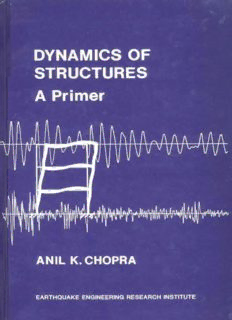
Dynamics of Structures A Primer
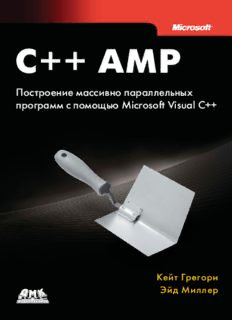
C++ AMP. Построение массивно параллельных программ с помощью Microsoft Visual C++.

Spezielle Magenchirurgie
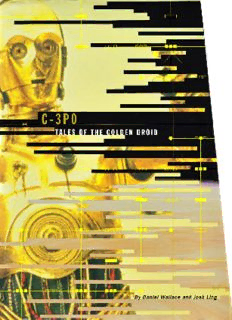
C-3PO: Tales of the Golden Droid

2006 Social Club Program
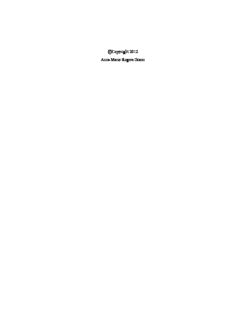
c Copyright 2012 Anna Marie Rogers Dixon

Mind, Value, and Reality
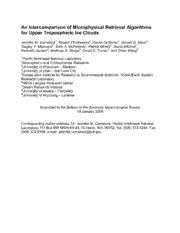
NASA Technical Reports Server (NTRS) 20080006487: An Intercomparison of Microphysical Retrieval Algorithms for Upper Tropospheric Ice Clouds
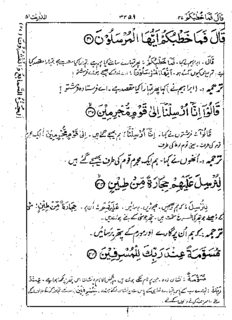
Tafseer-e-Siddiqi (Volume 27)
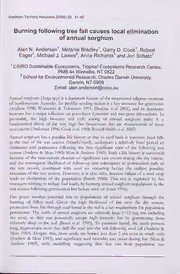
Burning following tree fall causes local elimination of annual sorghum

Software Language Engineering: Third International Conference, SLE 2010, Eindhoven, The Netherlands, October 12-13, 2010, Revised Selected Papers
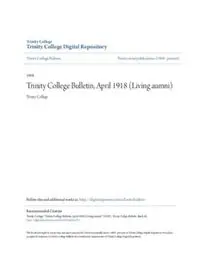
Trinity College Bulletin, April 1918 (Living aumni)
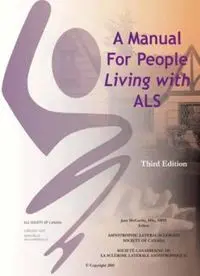
A Manual For People Living with ALS
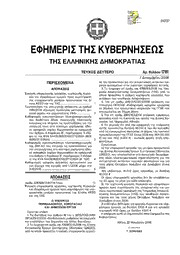
Greek Government Gazette: Part 2, 2006 no. 1781
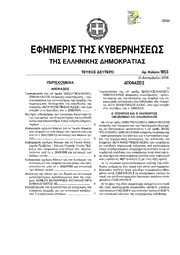
Greek Government Gazette: Part 2, 2006 no. 1853
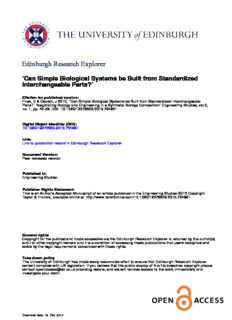
Can Simple Biological Systems be Built from Standardized Interchangeable Parts?
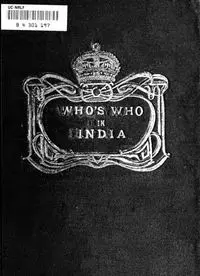
supplementtowhos00luckrich_bw

